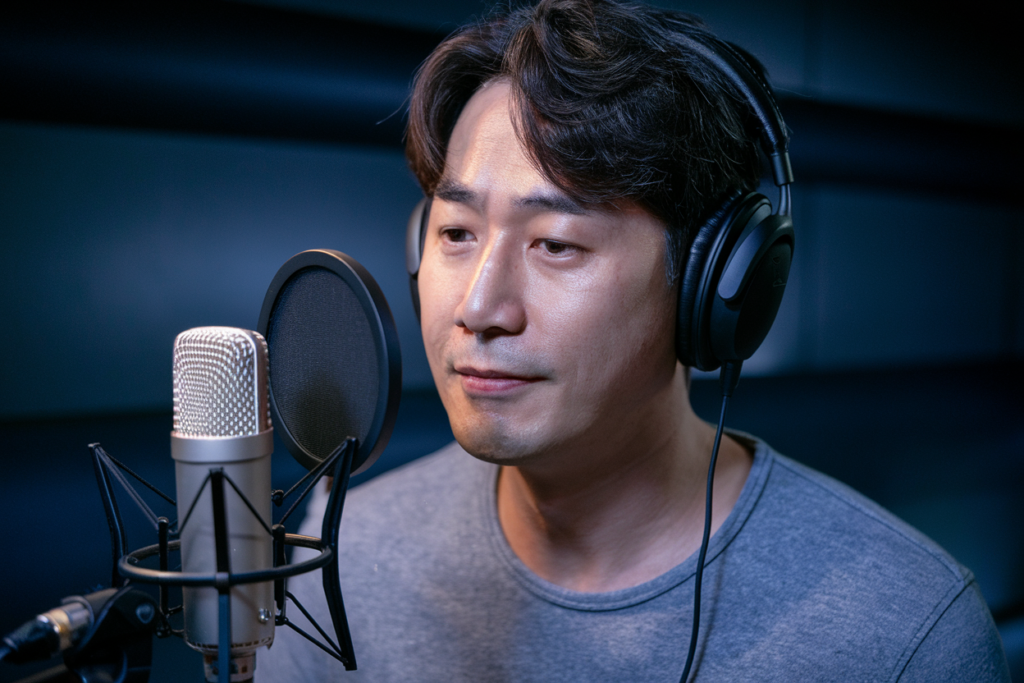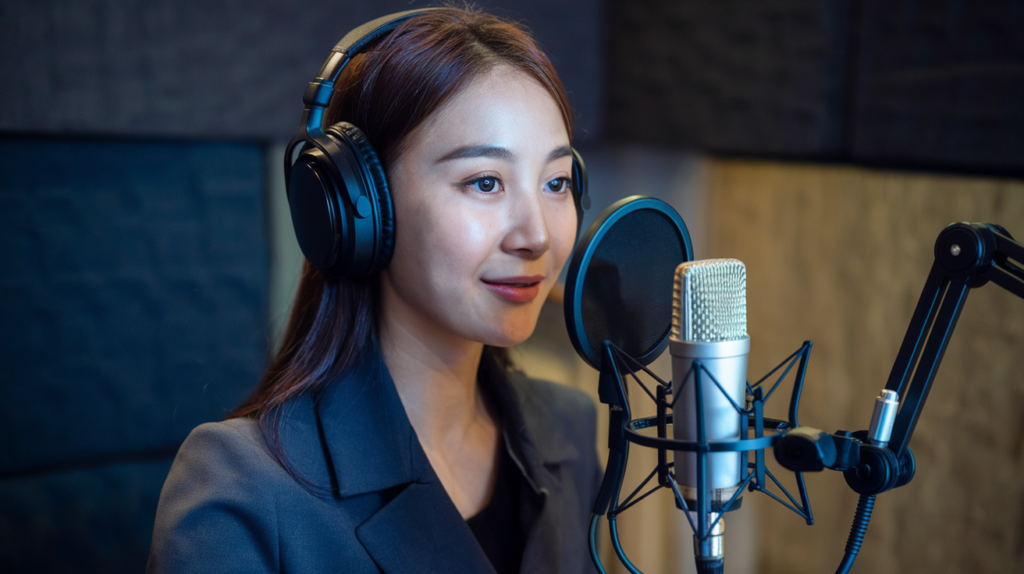Key Takeaways
- Cultural Understanding is Key: Mastering Korean voiceover guidelines involves grasping cultural nuances to ensure effective communication and audience connection.
- Voiceover Styles Matter: Different contexts require distinct voiceover styles, such as formal for corporate content and informal for entertainment, emphasizing the importance of emotional range and regional accents.
- Script Preparation is Crucial: Accurate translation and clear script formatting are vital for maintaining the original message’s intent while making it relatable to the target audience.
- Invest in Quality Equipment: Using professional recording equipment, like condenser microphones and reliable audio software, significantly enhances the quality of voiceovers.
- Create an Optimal Recording Environment: Soundproofing your recording space minimizes background noise and echoes, ensuring clear audio capture for better final results.
- Manage Client Expectations Proactively: Clear communication about timelines, cultural considerations, and feedback processes leads to smoother projects and greater client satisfaction.
Ever wondered how to nail that perfect Korean voiceover? Whether you’re a seasoned pro or just starting out, understanding the nuances of Korean voiceover guidelines can make all the difference. You don’t want your project to miss the mark due to cultural missteps or technical errors.
Overview of Korean Voiceover Guidelines
Korean voiceovers play a crucial role in media, influencing how audiences perceive content. Understanding the guidelines ensures effective communication and cultural resonance.
Importance of Voiceover in Korean Media
Voiceover adds depth to storytelling in Korean media. It allows for emotional connection, enhances engagement, and broadens accessibility for diverse audiences. Whether it’s for films, commercials, or educational materials, quality voiceovers help convey messages clearly while maintaining cultural nuances. You can create impactful narratives that resonate with listeners through skilled voice talent.
Key Differences in Voiceover Styles
Different styles define Korean voiceovers based on context and audience. For example:
- Formal vs. Informal: Formal tones suit corporate videos or documentaries; informal styles fit entertainment or youth-targeted content.
- Emotional Range: Voice actors adjust their delivery to match the emotional weight of scenes, whether it’s joy, sadness, or tension.
- Regional Accents: Familiarity with regional dialects is essential; using the right accent can enhance authenticity.
Recognizing these differences helps you select the appropriate voice artist for your project. Each choice shapes how effectively your message reaches its intended audience.
Essential Elements of Korean Voiceover
Understanding the essential elements of Korean voiceover can significantly enhance your project’s impact. Mastering these components ensures that the final product resonates with your audience.
Script Preparation and Translation
Script preparation is crucial in voiceovers. Ensure accuracy in translation to maintain the original message’s intent while aligning it with cultural nuances. Consider hiring skilled translators familiar with both languages; they’ll capture subtleties that a literal translation might miss. The tone, style, and context should match the target audience’s expectations for effective communication. Also, format scripts clearly, using appropriate punctuation and spacing to help voice artists deliver lines naturally.
Voice Acting Techniques
Voice acting techniques play a pivotal role in delivering engaging performances. Voice actors must adapt their delivery to fit various styles—be it formal or informal—while maintaining authenticity. Emotional range also matters; a skilled voice artist knows how to convey feelings effectively, whether it’s joy, sadness, or excitement. Additionally, pay attention to regional accents; selecting a voice talent who embodies specific dialects can enhance relatability for certain audiences.
By focusing on these essential elements in Korean voiceover projects, you ensure clear messaging and emotional connections that resonate deeply with listeners.
Technical Aspects of Korean Voiceover
Understanding the technical aspects of Korean voiceovers is crucial for delivering high-quality results. You’ll want to consider elements like equipment, software, and your recording environment to ensure the best output.
Equipment and Software Recommendations
Investing in quality equipment makes a significant difference in the final product. For recording, opt for a professional microphone—condenser microphones are popular among voice artists due to their sensitivity and clarity. Pair that with an audio interface to enhance sound quality during capture.
You’ll also need reliable software for editing. DAWs (Digital Audio Workstations) like Audacity or Adobe Audition are excellent choices. These tools allow you to edit recordings seamlessly, ensuring that every nuance of your voiceover shines through.
Consider using pop filters too; they minimize plosive sounds that can disrupt recordings. Lastly, headphones are essential—closed-back models help isolate sound so you hear precisely what’s being recorded without bleed from other noises.
Recording Environment Considerations
Creating an optimal recording environment significantly impacts the quality of your voiceover work. A quiet space free from distractions is non-negotiable; even small background noises can affect audio clarity. Look for locations with minimal external noise pollution.
Soundproofing materials such as acoustic panels or blankets can absorb unwanted echoes and reverberations. If possible, choose a smaller room—it naturally reduces echo compared to larger spaces.
Common Challenges in Korean Voiceover
Korean voiceover projects often present unique challenges that can impact the final product. Understanding these hurdles ensures a smoother process and better outcomes.
Cultural Nuances and Language Barriers
Cultural nuances play a significant role in delivering effective voiceovers. Certain phrases or expressions may carry different meanings or emotional weight in Korean compared to other languages. You might encounter words that don’t have direct translations, which can lead to misunderstandings if not handled correctly. Hiring skilled voice artists familiar with these subtleties helps bridge the gap, ensuring your message resonates authentically with your target audience.
Language barriers also pose challenges when interpreting scripts. A voice actor needs to grasp not just the words but the intended emotions behind them. Misinterpretations can result in tone discrepancies that weaken the overall impact of your project. Selecting a voice talent who understands both the language and cultural context is crucial for achieving an authentic delivery.
Managing Client Expectations
Managing client expectations is essential for successful Korean voiceover projects. Clear communication about timelines, revisions, and creative input prevents misunderstandings down the line. You should outline what clients can expect regarding delivery formats, audio quality, and any specific requirements they might have.
Educate clients on how cultural elements influence their requests—what sounds appealing in one culture might not resonate as well in another. Providing examples of previous work showcases your expertise while helping clients visualize their project’s potential outcome.
Encourage open dialogue throughout the process by checking in regularly with updates or seeking feedback on initial drafts. This proactive approach fosters collaboration and ensures all parties feel engaged and satisfied with the progress being made.
By addressing these common challenges head-on, you enhance clarity between all stakeholders involved while creating compelling Korean voiceovers that truly connect with audiences.
Conclusion
Mastering Korean voiceover guidelines is essential for creating impactful media that resonates with audiences. By understanding the nuances of language and culture you can avoid common pitfalls while enhancing storytelling through emotional authenticity.
Investing in quality equipment and hiring skilled professionals ensures your projects achieve high standards. Remember to prioritize script preparation and clear communication throughout the process.
With these strategies in place you’ll not only improve the quality of your voiceovers but also foster deeper connections with listeners, making your content stand out in a competitive landscape.
Frequently Asked Questions
What are the key techniques for mastering Korean voiceover?
Mastering Korean voiceover involves understanding cultural nuances, selecting appropriate tones, and adapting emotional range. It’s essential to prepare scripts carefully, hire skilled translators, and pay attention to regional accents to connect with specific audiences effectively.
Why is cultural understanding important in Korean voiceovers?
Cultural understanding ensures that the message resonates with the audience. Misinterpretations can lead to ineffective communication or alienation of listeners. Therefore, recognizing cultural subtleties can significantly enhance project authenticity and impact.
How do I choose the right voice artist for my project?
Select a voice artist based on their experience with formal versus informal tones and their ability to convey emotions authentically. Consider their familiarity with regional accents as well, which can improve relatability and overall effectiveness.
What equipment is recommended for high-quality recordings?
Invest in professional microphones, audio interfaces, reliable editing software (like Audacity or Adobe Audition), pop filters for plosive sounds, and closed-back headphones for sound isolation. Quality equipment greatly influences the clarity of your recordings.
How can I create an optimal recording environment?
To create an optimal recording environment, choose a quiet space and use soundproofing materials like acoustic panels. Minimizing background noise helps achieve clearer audio quality essential for effective communication.
What challenges might I face in Korean voiceover projects?
Common challenges include overcoming language barriers and addressing cultural nuances that affect delivery. Hiring skilled artists familiar with these aspects is crucial for ensuring authentic performance that resonates well with audiences.
How important is script preparation in Korean voiceovers?
Script preparation is vital as it maintains the original message’s intent while aligning with cultural contexts. Clear formatting aids artists in delivering lines naturally, resulting in more engaging performances that resonate emotionally with listeners.
How should I manage client expectations during a project?
Effective management of client expectations involves clear communication about timelines, potential revisions, and how cultural influences may shape the final product. Open dialogue fosters collaboration and enhances clarity throughout the project process.







